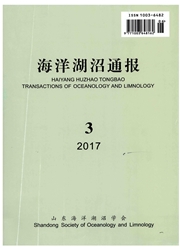

 中文摘要:
中文摘要:
初步探讨了利用高盐抑制受精卵第2极体(PB2)的释放的方法诱导太平洋牡蛎(Crassostrea gigas)三倍体。水温25℃条件下,分别进行不同高盐处理(盐度梯度为40、45、50、55、60、65、70、75、80)、不同处理时机(受精卵出现第一个PB1,30%和50%PB1,出现第一个PB2,50%PB2)和不同持续处理时间(10~25min)的实验,通过胚胎孵化率、三倍体诱导率及综合评价指数的分析表明,高盐诱导太平洋牡蛎三倍体的最适方案为:当50%受精卵出第一极体时,以盐度为65的高盐海水处理受精卵20min,三倍体诱导率最高达65.53%。
 英文摘要:
英文摘要:
Triploid induction was primary studied using high salinity treatment to inhabit the release of the second polar body(PB2)in fertilized eggs of Pacific oyster(Crassostrea gigas).Under the condition of 25℃ of seawater temperature,experiments were carried out to try different high salinities(S=40,45,50,55,60,65,70,75,80),different starting times for treatment(treated when observed first PB1,30% PB1,50% PB1,first PB2,50% PB2),and different treatment durations(10,15,20,25min).Analysis of hatching rates,triploid rates of D-shaped larvae and comprehensive evaluation indices showed that optimum scheme of high salinity induction in Pacific oyster was to treating fertilized eggs with salinity of 65 for 20min at the time when 50% fertilized eggs were observe to release PB1.The induced triploid rate was up to 65.53%.
 同期刊论文项目
同期刊论文项目
 同项目期刊论文
同项目期刊论文
 期刊信息
期刊信息
